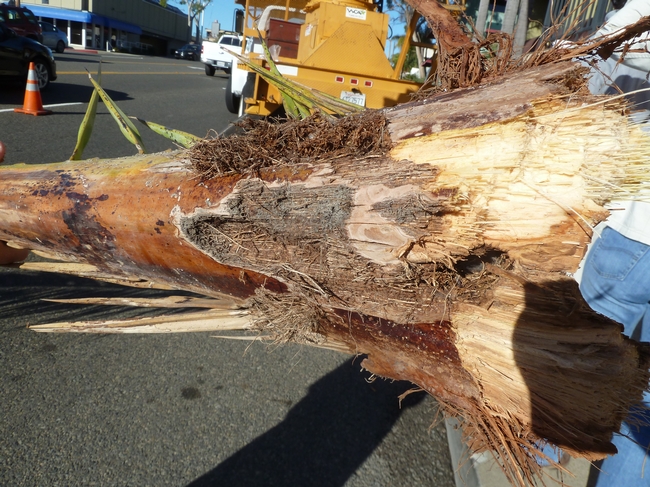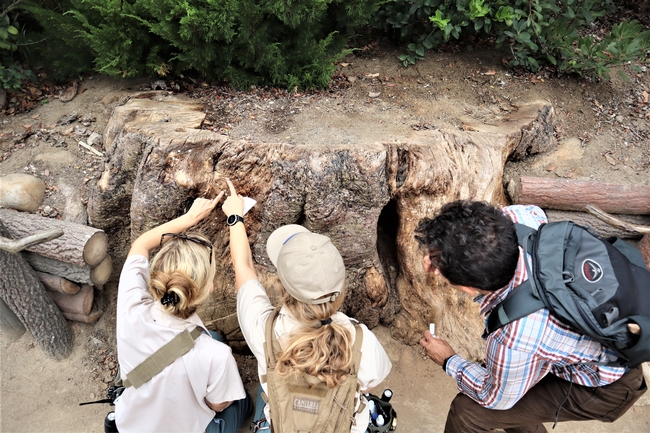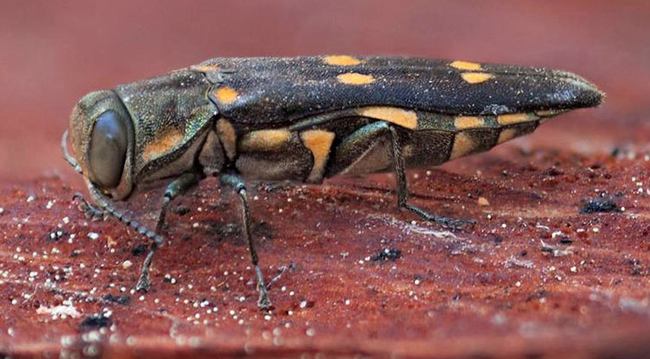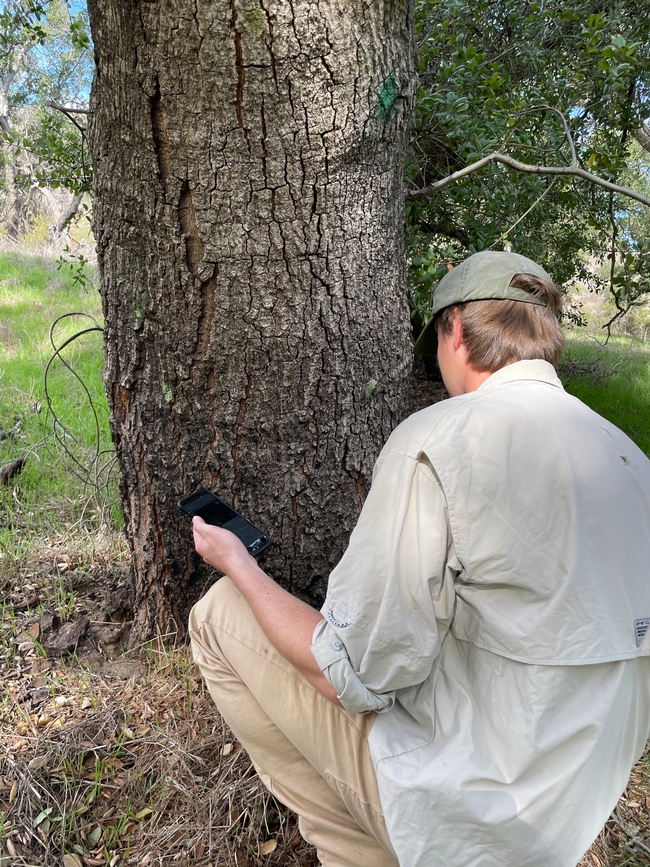
Posts Tagged: oak
Invasive Spotlight: Goldspotted Oak Borer (GSOB)
There are several flatheaded boring beetles in California, however only a few are of particular...
Invasive pests kill thousands of trees, but scientists see some successes
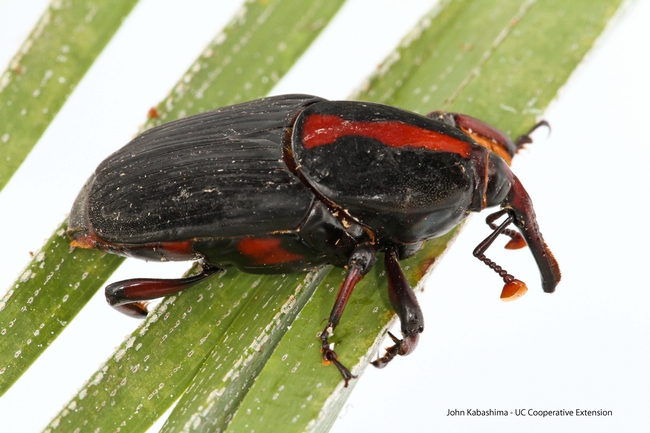
Early detection increases the chances of eradicating pests
Trees provide shade to keep us cool, produce oxygen for us to breathe and calm our nerves. Numerous studies have demonstrated that even brief contact with trees and green spaces can provide significant human health benefits such as reductions in blood pressure and stress-related hormones. Trees also reduce noise and visual pollution, help manage storm water runoff, reduce erosion and provide habitat for birds and wildlife. Trees naturally capture carbon, helping to offset the forces of climate change. They also increase the value of our properties and communities. In short, trees are essential to our well-being.
Unfortunately, invasive pests pose an ongoing threat to California's forests in both urban and wildland settings. Invasive insects such as goldspotted oak borer and invasive shothole borers have killed hundreds of thousands of trees in Southern California and are continuing to spread. Meanwhile, other pests and diseases such as Mediterranean oak borer and sudden oak death are killing trees in Northern California.
While the situation may sound dire, it is not hopeless. Of course, the best way to stop invasive pests is to prevent them from entering the state, as the California Department of Food and Agriculture has done on many occasions. For example, several months ago, CDFA border inspectors seized a load of firewood containing spotted lanternfly eggs (a pest that is causing extensive damage on the East Coast). When pests do sneak in, the next defense is to catch them early before they become established. Finally, even if pests do become established, they can be managed if not completely eradicated.
A few examples may help to illustrate why invasive tree pests deserve action, but not panic.
Red striped palm weevil eradicated in Laguna Beach
When red striped palm weevil, a highly destructive palm pest native to Indonesia, was discovered in Laguna Beach in October 2010, a working group was quickly formed to develop a management plan. The small but diverse group included international palm weevil experts, research scientists from University of California Riverside, CDFA and U.S. Department of Agriculture, UC Cooperative Extension personnel from San Diego, Orange and Los Angeles counties and county entomologists from the agricultural commissioner's offices in Orange and San Diego counties.
The resulting response included a pheromone-based trapping program, public advisory and targeted insecticide treatments. Within two years, additional trapping and inspections could not find any signs of continued infestations. Early detection was key to the success: the infestation in Laguna Beach was identified early, so the weevil population was still relatively small. In addition, Laguna Beach is geographically isolated, the local climate is much cooler than the weevil's place of origin, and the eradication effort was well funded by state and federal agencies. Eliminating invasive pests where such conditions are not present may prove more difficult.
Invasive shothole borers attack Disneyland
The Disneyland Resort in Anaheim contains 16,000 trees and over 680 different tree species. When park officials identified an infestation by invasive shothole borers in 2016, their initial attempts at vanquishing the insects with pesticides produced mixed results. Then, they consulted with experts from UC Riverside and UC Cooperative Extension and together designed and followed an integrated pest management program that included monthly ground surveys, a trapping program that helped to detect infestation hot spots and find and remove the source of beetles, and occasional pesticide treatments on selected trees. The park went from a large number of beetles in 2017 to very low levels today. There are still some beetles, but resulting damage is extremely low, and although monitoring programs continue, the park's landscape team has been able to turn its focus elsewhere.
Goldspotted oak borer spotted in Weir Canyon
When goldspotted oak borer was confirmed in Orange County's Weir Canyon in 2014, a team from Irvine Ranch Conservancy, the organization that manages the area on behalf of Orange County Parks, sprang into action. UC Cooperative Extension and the US Forest Service assisted IRC in developing a management program, and over the ensuing years, IRC has actively collaborated with OC Parks, The Nature Conservancy, OC Fire Authority, and CAL FIRE to control the existing infestation and stop its spread. IRC has surveyed the oaks in the area yearly to monitor the infestation and guide each year's management actions.
To reduce the spread of the infestation, IRC removed more than 100 severely infested oaks in the first few years of management (no severely infested oaks have been found in the last few years of surveys). Additionally, more than 3,000 tree trunks have been sprayed annually in the late spring to kill emerging adult beetles and newly hatched offspring.
In the most recent survey of the oaks in Weir Canyon, the IRC team found only 12 trees with new exit holes, and most of those had just one to two exit holes per tree, which is an extremely low number. With the situation well under control, IRC is now considering modifying its annual spraying program and adapting other less aggressive treatment options. Finally, IRC has been actively planting acorns to mitigate losses due to the removals as well as the Canyon 2 Fire of 2016.
As these brief examples demonstrate, insect pest infestations can be managed or even eradicated if caught early enough. Early detection not only increases the chances of success, but also minimizes the cost of pest management efforts.
What you can do to prevent infestation
While management actions will vary depending on the insect or disease, species of tree and location, there are a few steps that will lead to greater success in fighting tree pests and diseases.
- Keep your trees healthy. Proper irrigation and maintenance go a long way toward keeping trees strong and resistant to pests and diseases.
- Check your trees early and often for signs and symptoms of tree pests and diseases. These may include entry/exit holes, staining, gumming, sugary build-ups, sawdust-like excretions, and branch or canopy dieback. Use available tools like the UC IPM website to determine probable causes of the problems.
- Talk with experts (arborists, pest control advisers, researchers and advisors from the University of California and other institutions), and report pest findings to your county Agricultural Commissioner.
- Evaluate the extent of tree damage and determine a management plan. Remove severely infested branches and trees that may be a source of insect pests that can attack other trees.
- Properly manage infested wood and green waste. Chip wood and other plant materials as small as possible. Solarization or composting can further increase the effectiveness of chipping. It is generally best to keep those materials close to where they originated, but if you absolutely need to move them, first make sure the facility where they will be sent is equipped to process them. Always tightly cover materials while in transit. If working with a tree care professional, insist that proper disposal is part of the job requirements.
- Many invasive tree pests can survive in down wood for long periods. When buying or collecting firewood, always obtain it as close as possible to where you are going to burn it and leave leftover firewood in place.
Wasps, Wasps, Wasps: Weird and Wonderful Wasps
Do you have a question about wasps or want to learn more about them? Be sure to attend the free...
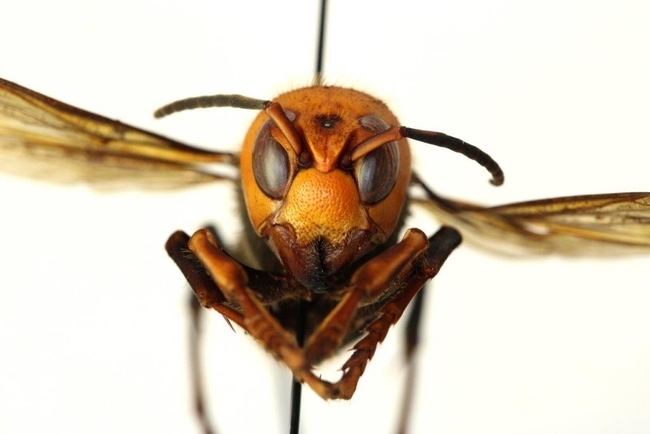
This is the Asian giant hornet, Vespa mandarinia, dubbed by the news media as “the murder hornet." The Entomological Society of America recently established as its official common name, “northern giant hornet.” (Photo courtesy of the Washington State Department of Agriculture)
Organic Ag Institute begins forming knowledge network, assessing needs
Cal OAK Network to build on, grow connections between UC and organic community
After pioneering the organic movement in the 1970s, California now leads the nation in number of organic farms, total organic acreage and overall organic crop value. Attaining this status was no small feat, and largely driven by resourceful growers who developed and refined the wide range of novel organic farming practices seen in California today.
Now, with the creation of the Organic Agriculture Institute, the University of California will be able to leverage its vast capacity for research, extension and education to further improve the sustainability, resilience and profitability of organic agriculture in the state.
In its first major public initiative, the Organic Agriculture Institute – a program of UC Agriculture and Natural Resources – is conducting a statewide needs assessment for organic agriculture, as well as forming a knowledge-sharing network that connects UC experts with growers, processors, producer organizations, certifiers, crop consultants, community groups and state agencies.

“This network will be a sustainability partnership that enables learning, innovation and cooperation among organic agriculture stakeholders,” said Houston Wilson, director of the Organic Agriculture Institute, which was established in January 2020. “As facilitator of the Cal OAK Network, the Organic Ag Institute will serve as an intermediary that fosters communication among stakeholder groups, organizes discourse, forges new collaborations, and generally enhances coordination of stakeholder activities.”
By creating closer connections between the UC and the organic community, the Cal OAK Network will foster ongoing feedback cycles of knowledge and best practices, and in doing so help create the conditions and momentum to facilitate the development and adoption of organic production practices.
“The Cal OAK Network will better connect the organic community with UC technical and training resources, while at the same time providing a mechanism for that community to feed information back to the UC that helps us shape our programs at the Organic Ag Institute,” said Wilson, noting potential contributions in areas such as pest control, weed management and crop nutrition.
In the first 18 months of the Institute, Wilson has been charting the current landscape of organic agriculture in California, listening to the needs of stakeholders and working to position the Institute in a way that best uses the UC's unique research and extension capacities to support and augment existing efforts by growers and other groups.

The Institute recently received a planning grant from the National Institute of Food and Agriculture to conduct a formal needs assessment through summer 2022. In surveying growers and other stakeholders, the Institute seeks to identify their primary research and extension priorities, as well as gain a better understanding of the key people and organizations they currently rely on for information about organic production.
Through this process, a map of nodes and connections in the organic community will also take shape – and the roster of members for the Cal OAK Network will continue to grow. As Wilson points out, it is only through a diverse and robust information-sharing system that California organic agriculture will successfully adapt to challenges like climate change.
“We're trying to create a resilient infrastructure for engagement with organic stakeholders,” he said. “When we talk about sustainability in agriculture, part of that is having sustainable institutions that function well and can be flexible and dynamic as new challenges arise down the road.”
To learn more about and join the California Organic Agriculture Knowledge Network, visit organic.ucanr.edu and contact Wilson at hwilson@ucanr.edu.
Poison Oak: Leaves of Three, Let Them Be
Poison oak is a common native plant in California, growing everywhere from oak woodlands to urban...

